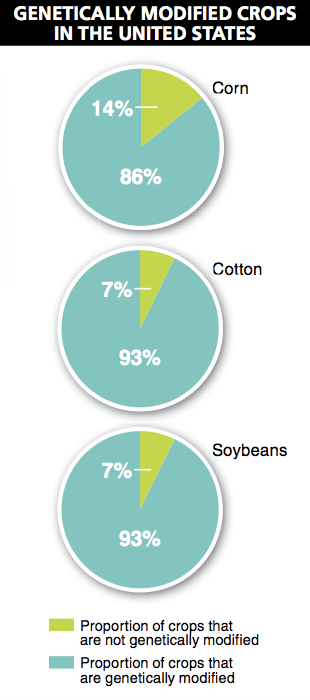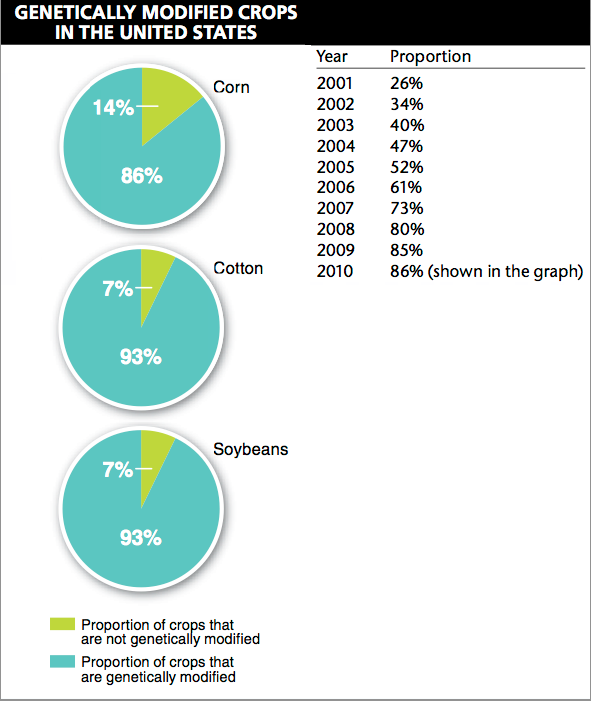
Chapter 5. Chapter 5 Graphic Content
Introduction

Instructions
Review the information provided in the graph to answer each question below.
After submitting your answer, you will be provided feedback to check if your response is correct.
(This activity contains 6 questions.)
1.

1. What proportion of corn grown in the United States is genetically modified?
2.

2. From the figure, can you determine whether there is more genetically-modified corn or genetically-modified cotton produced in the United States? How do you do this? And if it is not possible, why isn’t it?
3.

3. What is the “take-home message” from this figure? Does it influence your thoughts on genetically modified crops? Why or why not?
4.

4. Why are data given for proportions of genetically-modified crops rather than absolute amounts? Does this alter your interpretation of the graph?
5.

5. Worldwide, the percent of corn grown that is genetically-modified just 26%, while the proportion of soybeans and that is genetically modified is 77% and cotton is 49%. How would this information add value to the figure?
6.

6. The proportion of corn grown in the United States that is genetically modified has changed since 2001 (as shown in the table above). What are two different ways that you could display these data? What is the clearest conclusion someone would draw from the figures?
Activity results are being submitted...